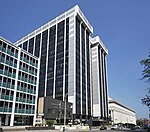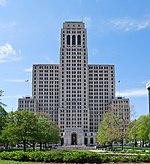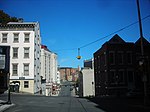University Club of Albany

The University Club of Albany, New York, was founded at the start of the 20th century. It is currently housed in a Colonial Revival brick building at the corner of Washington Avenue (New York State Route 5) and Dove Street. In 2011 that building was listed on the National Register of Historic Places.Young men who had recently graduated from college founded the club in the early 20th century as a place to gather until they had achieved the social status necessary to follow their fathers into the older Fort Orange Club. It met in one founder's house for several years until it could purchase a house that stood at the current location, on which it built a wing. When that house burned down in the 1920s, Albany architects the Fuller & Robinson company designed the current main building to replace it. It was his last major work in the city. The club has played a role in the city's social and cultural life since its founding. Speakers at its events in its early years included President William Howard Taft, Andrew Carnegie, Earl Grey and various governors of New York. Its amenities include a library, dining facilities, meeting rooms, and one of the oldest bowling alleys in the country, which may also be the oldest private bowling alley in continual use in the state.
Excerpt from the Wikipedia article University Club of Albany (License: CC BY-SA 3.0, Authors, Images).University Club of Albany
Dove Street, City of Albany
Geographical coordinates (GPS) Address Nearby Places Show on map
Geographical coordinates (GPS)
| Latitude | Longitude |
|---|---|
| N 42.655833333333 ° | E -73.760833333333 ° |
Address
Dove Street 17
12210 City of Albany
New York, United States
Open on Google Maps











